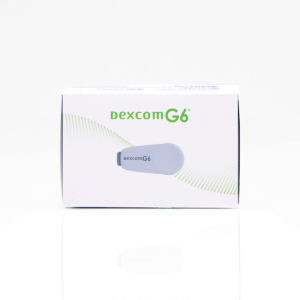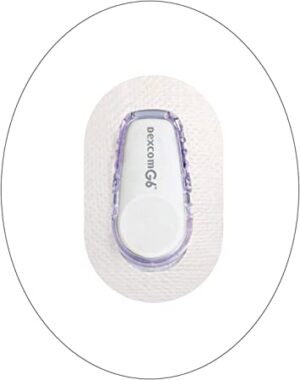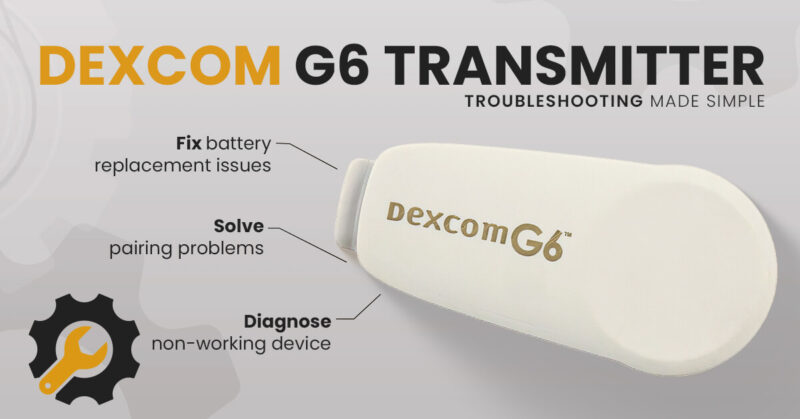Use of Dexcom G6 Transmitter
The Dexcom G6 Transmitter is a device used to monitor blood glucose levels in people with diabetes. It is a small, lightweight device that is usually worn on the abdomen and transmits data to a receiver or a compatible smart device. The transmitter works with the Dexcom G6 Continuous Glucose Monitoring System to provide real-time glucose readings and data trends.
The transmitter is used to monitor glucose levels and alert users if their levels become dangerously too high or low. The Dexcom G6 system also allows users to share their glucose readings with family and healthcare providers.
How to change the battery in the Dexcom G6 transmitter?
- Turn off the transmitter by pressing and holding the power button until the power icon disappears.
- Use the screwdriver to remove the battery door on the back of the transmitter. A single screw secures the door.
- Carefully remove the old battery and dispose of it properly. It is not recommended to reuse the Dexcom G6 transmitter because it is meant to be thrown away. Carefully remove the transmitter’s battery, place it in a plastic bag, and put the bag in the recycle bin. Do not attempt to open the battery or puncture it in any way.
- Insert the new battery with the positive side facing up. The battery should fit snugly into the compartment.
- Replace the battery door and secure it with a screw.
- Turn the transmitter back on by pressing and holding the power button until the power icon appears. The transmitter will automatically turn on and connect to your receiver.
Note: Keep in mind that changing the battery will not affect the data stored in the transmitter, and the sensor will continue to transmit data to the receiver. Also, make sure to use only the recommended type of battery, as other types of batteries may cause damage to the device.
How to pair the Dexcom G6 transmitter with a new receiver?
Before following any of the steps outlined below, it is recommended to check the device’s manual for any specific instructions or troubleshooting steps, as they can vary depending on the manufacturer’s instructions.
In general, pairing the Dexcom G6 transmitter with a new receiver involves the following steps:
- Turn on the new receiver by pressing and holding the power button until the power icon appears.
- Press the “Menu” button on the receiver and then select “Settings.”
- Scroll down and select “Link Transmitter.”
- Press the “Select” button and then enter the code displayed on the receiver into the transmitter.
- Press the “Select” button on the transmitter to confirm the code.
- Wait for the receiver and transmitter to connect. This may take a few minutes.
- Once the connection is established, the receiver will display a message confirming that the pairing was successful.
- Press “OK” on the receiver to continue.
Note: If the transmitter is currently paired with another receiver, it must be unlinked from that receiver first before it can be paired with the new one. Also, if the pairing process failed, make sure that the transmitter is turned on and in range of the receiver and check that the code entered is correct.
How to restart the Dexcom G6 transmitter?
- Remove the Dexcom G6 transmitter from the sensor and charging cable.
- Unscrew the back of the transmitter to remove the battery.
- Replace the battery and screw the back of the transmitter back on.
- Re-attach the Dexcom G6 transmitter to the sensor and charging cable.
- Press and hold the power button on the Dexcom G6 transmitter for 5–10 seconds until a blue light appears, which implies that the Dexcom G6 transmitter is now restarted.
What to Do If the Dexcom G6 Transmitter Is Not Working?
If you are experiencing issues with your Dexcom G6 transmitter, there are a few steps you can take to troubleshoot the problem.
First, ensure that the transmitter is properly paired with the receiver or smart device. This can often be the cause of connectivity issues.
Next, check the battery level of the transmitter and replace the battery if necessary. It is also important to make sure that the sensor is properly inserted, and the adhesive is secure. Sometimes, the sensor may become dislodged or the adhesive may lose its grip, causing the transmitter to malfunction.
Another potential cause of issues is interference from other electronic devices or nearby medical equipment. Try moving the transmitter and receiver or smart device away from any potential sources of interference.
If the above steps do not resolve the issue, try restarting the transmitter and receiver or smart device. This can typically clear up any minor glitches that may be causing the problem.
If all else fails, reach out to DexDemand customer support for further assistance. They will provide additional guidance and may be able to help you identify and resolve the issue. Note that if the transmitter is not working, it might be defective, and it may need to be replaced.
Conclusion
In conclusion, troubleshooting common issues with the Dexcom G6 transmitter can be a straightforward process with the right steps. By carefully following the steps mentioned above, you can quickly resolve most issues and get back to monitoring your glucose levels with ease. But if the steps are not working, DexDemand customer support is one chat away for further assistance.



